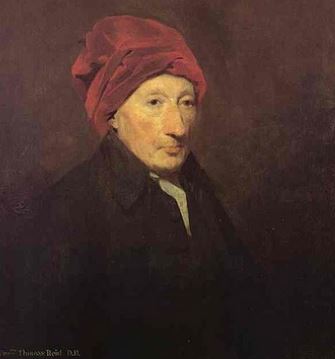 Catachresis, the mistaken use of one term for another, can arise through confusibility, which I discussed last week, or through ambiguity. Ambiguity (Latin amb-, implying both ways, + agere to drive) is the capacity of a single term to be understood in two or more ways. It can be lexical (i.e. affecting a word), grammatical, or literary. The last need not concern us here.
Catachresis, the mistaken use of one term for another, can arise through confusibility, which I discussed last week, or through ambiguity. Ambiguity (Latin amb-, implying both ways, + agere to drive) is the capacity of a single term to be understood in two or more ways. It can be lexical (i.e. affecting a word), grammatical, or literary. The last need not concern us here.
Lexical ambiguity is of two types, polysemous and homonymous. Polysemy is the possession of multiple meanings, senses, or connotations by a word that has a single etymological origin. This occurs because words tend to accrete new meanings and to change meanings with time. In some cases a word may even come to mean the opposite of what it originally meant.
Take, for example, “compendium”, which is defined as “an abridgement or condensation of a larger work or treatise, giving the sense and substance, within smaller compass” (OED). I might make a compendium out of an encyclopaedia by including all the entries it contains but abbreviating them. However, the word is commonly used in the sense of “encyclopaedia”; to quote The New Fowler’s Modern English Usage (1996), “Like many words indicating size, [compendious] is somewhat extendible in meaning, and is often misleadingly applied to works that are more marked by their comprehensiveness than by their conciseness.” Here are two examples. The first is from a book called Ancient Forestry (1969): “Livy’s history is an extraordinarily compendious work”; Livy’s History of Rome From its Foundation consisted of 142 volumes. The second is in the title of a 1967 paper in the Serbian journal Vojnosanitetski Pregled (the Military-Medical and Pharmaceutical Review), “Enciklopedije kao prirucnici znanja”, which is translated in Pubmed as “Encyclopedias as a compendium of knowledge”. And what are we to make of DrugCentral “the online drug compendium”, which advertises itself as containing comprehensive lists, and the seven volumes of the World Century Compendium to TCM?
Homographic ambiguity can arise when two or more words of different origins and meanings come to be spelt in the same way. To cleave = to split comes from an Old English word clíofan; to cleave = to stick together comes from a different Old English word, clífan.
In written texts the correct meaning is often clear from the context. However, problems can arise if technical terms are ambiguously defined. Take for example, “hypotension” as a diagnosis. In a systematic review of 47 papers including 56 references to definitions and diagnostic criteria for hypotension, no uniform definition was found nor any clear standardised criteria on which to base a diagnosis. The authors distinguished two types of literature: the Anglo-American, in which hypotensive disorders were described in terms of orthostatic dysregulation in the presence of an underlying primary condition, and literature from German speaking countries, in which mixed approaches were used. If databases combine reports on “hypotension” from places where different definitions are used, mistaken conclusions can arise.
Grammatical ambiguity can also be problematic. For example, does “take three tablets a day” mean three tablets in the morning or evening or one tablet three times during the day? And does the statement that “[in 42 cases] two positive rechallenges were reported” mean that two patients had positive results on rechallenge or that one patient had positive results on rechallenge on two separate occasions? Probably the former, but one cannot be sure.
In philosophical discussions of mechanisms, the phrase “evidence of mechanism” is often used. However, it is not always clear whether the intended meaning is (a) evidence that shows that a mechanism exists or how it operates or (b) the use of a mechanism as evidence of something else. These two meanings can be distinguished by using the phrases “evidence for a mechanism” for the former and “evidence from a mechanism” for the latter.

Ambiguities can be difficult for writers to detect, because they know what they want to say and may not realise that another meaning is possible. It is always wise to get another person to read your text before publishing it.
As the 18th century Scottish philosopher Thomas Reid, a contemporary and critic of David Hume, wrote in Essays on the Intellectual Powers of Man (1785), “There is no greater impediment to the advancement of knowledge than the ambiguity of words.”
Jeffrey Aronson is a clinical pharmacologist, working in the Centre for Evidence Based Medicine in Oxford’s Nuffield Department of Primary Care Health Sciences. He is also president emeritus of the British Pharmacological Society.
Competing interests: None declared.
